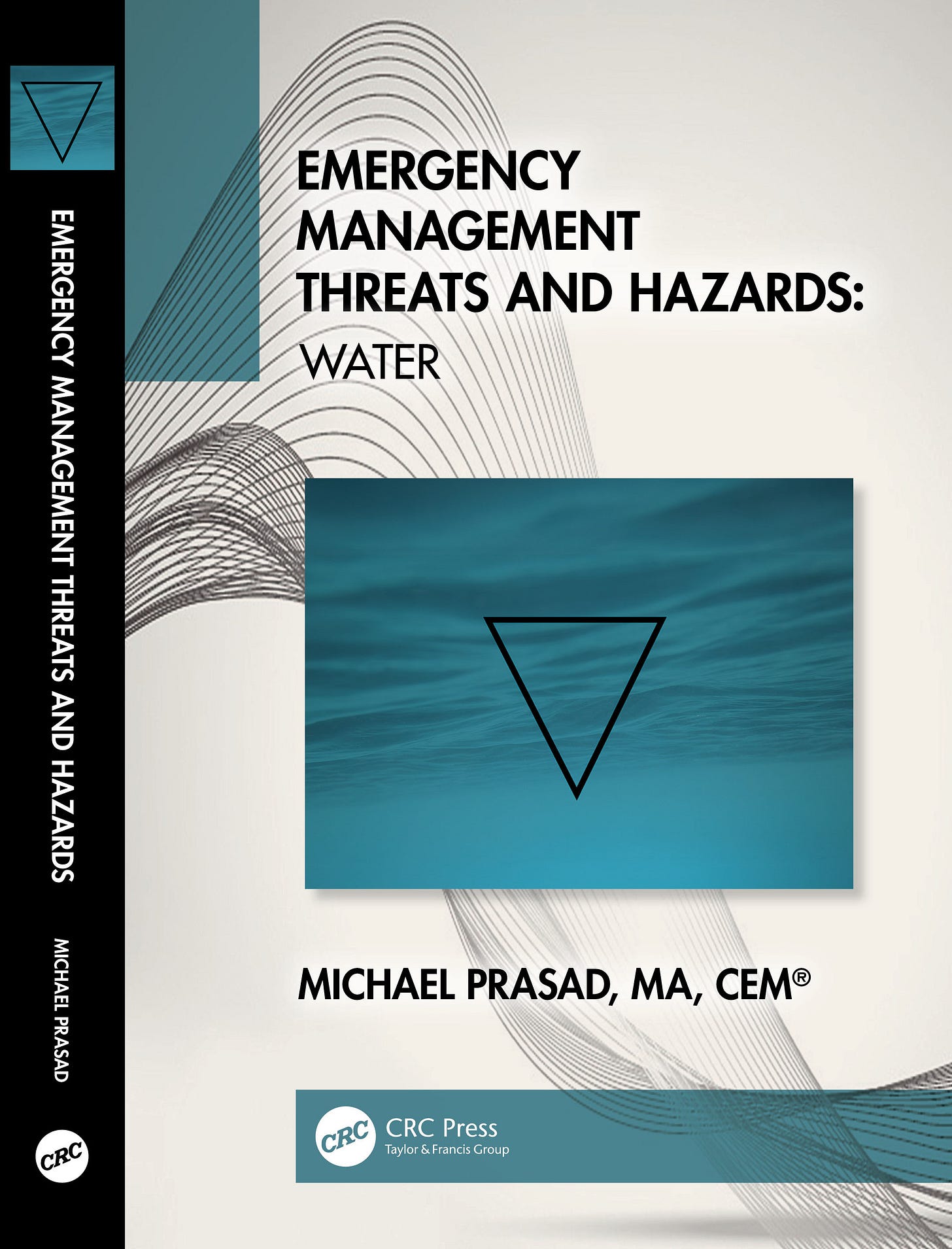July Updates from the CEMIR
Water book online course, Article published for the US DoD, new Policy Council content, and more.
Emergency Management Threat and Hazards: Water Fall 2025
Registration is open and the course begins on September 8th.
Emergency Management Threat and Hazards: Water is a 50-hour course, spread out over 15 weeks. It bridges the work of emergency management practitioners at any level, with that of academic researchers, specifically for water-related incidents. Practitioners who typically follow a disaster phase cycle of the U.S. based preparedness/protection/prevention, response, recovery, and mitigation will find this course to have the distinct actions and missions to reduce or eliminate adverse impacts from both threats and hazards.
The course is based on the book of the same name, and examines many of the distinct differences and variances within the specific scope of water-related incidents, crises, emergencies, and disasters. The course will cover examples and practical strategies for protection/prevention, response, recovery, and mitigation against adverse impacts to people, property, and organizations. This course will help Emergency Managers develop plans, organize staff, identify equipment and additional training needed, and design exercises to support your teams.
This 100% virtual course is designed for adult learners of different types, and can be completed self-paced, via attendance at a weekly session, or both.
Please visit https://www.emergencymngr.com/water for more information and to register.
Breaking Through Intelligence Silos for Domestic Emergency Management
Article published in the HDIAC’s Volume 9, Issue 1, written by Michael Prasad
While there are gaps in the United States between law enforcement and emergency management on intelligence and information sharing, those gaps also extend to other members of the intelligence community (IC). This includes U.S. Department of Defense (DoD) groupings and non-DoD military groups such as the U.S. Coast Guard (USCG)—especially as they relate to the DoD’s support to civilian authorities.
Read the entire article online for free at https://hdiac.dtic.mil/articles/breaking-through-intelligence-silos-for-domestic-emergency-management/
And Mike is doing a free webinar on this topic. Register at: https://buff.ly/ZmIVkUo
Check out Mike’s article on Amateur Radio capabilities in support of Emergency Management at the ARRL’s QST magazine (no fire-wall, free version).
And you can read Mike’s latest addition to the subscriber-based EM intelligence feed at The Policy Council, on ESF#1 - Transportation:
The U.S. Interstate Highway System: Origins and Vision
When one thinks about the need for federal support of emergency management, one example from the past - before FEMA existed - can shed some light on benefits for uniform, consistent, and capable infrastructure systems - which benefit the totality of Emergency Management and Homeland Security in the continental United States now and into our future. Some content below was assisted with Microsoft’s CoPilot AI.
Over at the CEMIR, we also produce a free blog post once a month (coincidentally at the same time as this one – every 15th or so day of each month). You can subscribe to those here.
And Mike’s new e-book is now available! It is free to read online via Pressbooks:

And the Amazon Kindle version of this book (no royalties) is available now, as well as a paperback print version from Amazon as well. Also, no royalties.
You can find Mike virtually - and in person! - during 2025 at a number of conferences and trainings, including the IAEM-USA Region 2 conference in Paul Smiths, New York. Click on the badge above for more details. And learn more about his 2025 speaking “tour”, at https://michaelprasad.com/events.










